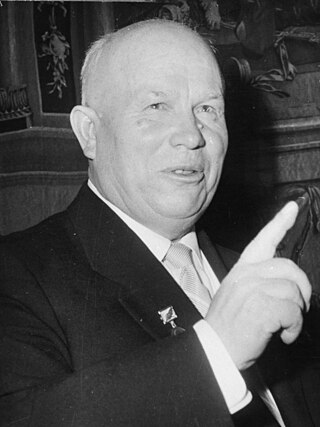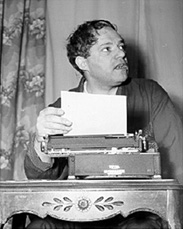
The Battle of Stalingrad was a major battle on the Eastern Front of World War II, beginning when Nazi Germany and its Axis allies attacked and became locked in a protracted struggle with the Soviet Union for control over the Soviet city of Stalingrad in southern Russia. The battle was characterized by fierce close-quarters combat and direct assaults on civilians in aerial raids; the battle epitomized urban warfare, being the single largest and costliest urban battle in military history. It was the bloodiest and fiercest battle of the entirety of World War II—and arguably in all of human history—as both sides suffered tremendous casualties amidst ferocious fighting in and around the city. The battle is commonly regarded as the turning point in the European theatre of World War II, as Germany's Oberkommando der Wehrmacht was forced to withdraw a considerable amount of military forces from other regions to replace losses on the Eastern Front. By the time the hostilities ended, the German 6th Army and 4th Panzer Army had been destroyed and Army Group B was routed. The Soviets' victory at Stalingrad shifted the Eastern Front's balance of power in their favour, while also boosting the morale of the Red Army.

Georgy Konstantinovich Zhukov was Marshal of the Soviet Union from 1943 to 1957. He also served as Chief of the General Staff, Minister of Defence, and was a member of the Presidium of the Communist Party. During World War II, Zhukov oversaw some of the Red Army's most decisive victories, after which he was appointed the military governor of the Soviet occupation zone in Germany.

Nikita Sergeyevich Khrushchev was First Secretary of the Communist Party of the Soviet Union from 1953 to 1964, and Chairman of the Council of Ministers (premier) from 1958 to 1964. During his rule, Khrushchev stunned the communist world with his denunciation of his predecessor Joseph Stalin and embarked on a policy of de-Stalinization with his key ally Anastas Mikoyan. He sponsored the early Soviet space program and enacted reforms in domestic policy. After some false starts, and a narrowly avoided nuclear war over Cuba, he conducted successful negotiations with the United States to reduce Cold War tensions. In 1964, the Kremlin circle stripped him of power, replacing him with Leonid Brezhnev as First Secretary and Alexei Kosygin as Premier.

Robert Capa was a Hungarian-American war photographer and photojournalist. He is considered by some to be the greatest combat and adventure photographer in history.

Semyon Konstantinovich Timoshenko was a Soviet military commander, Marshal of the Soviet Union, and one of the most prominent Red Army commanders during the Second World War.

The Ukrainian Soviet Socialist Republic, abbreviated as the Ukrainian SSR, UkSSR, and also known as Soviet Ukraine or just Ukraine, was one of the constituent republics of the Soviet Union from 1922 until 1991. Under the Soviet one-party model, the Ukrainian SSR was governed by the Communist Party of the Soviet Union through its republican branch, the Communist Party of Ukraine.

Order No. 227 was an order issued on 28 July 1942 by Joseph Stalin, who was acting as the People's Commissar of Defence. It is known for its line "Not a step back!", which became the primary slogan of the Soviet press in summer 1942.

Ilya Grigoryevich Ehrenburg was a Soviet writer, revolutionary, journalist and historian.
The history of the Soviet Union between 1927 and 1953, commonly referred to as the Stalin Era or Stalinist Era, covers the period in Soviet history from the establishment of Stalinism through victory in the Second World War and down to the death of Joseph Stalin in 1953. Stalin sought to destroy his enemies while transforming Soviet society with central planning, in particular through the forced collectivization of agriculture and rapid development of heavy industry. Stalin consolidated his power within the party and the state and fostered an extensive cult of personality. Soviet secret-police and the mass-mobilization of the Communist Party served as Stalin's major tools in molding Soviet society. Stalin's methods in achieving his goals, which included party purges, ethnic cleansings, political repression of the general population, and forced collectivization, led to millions of deaths: in Gulag labor camps and during famine.

The Eastern Front, also known as the Great Patriotic War in the Soviet Union and its successor states, and the German–Soviet War in modern Germany and Ukraine, was a theatre of World War II fought between the European Axis powers and Allies, including the Soviet Union (USSR) and Poland. It encompassed Central Europe, Eastern Europe, Northeast Europe (Baltics), and Southeast Europe (Balkans), and lasted from 22 June 1941 to 9 May 1945. Of the estimated 70–85 million deaths attributed to World War II, around 30 million occurred on the Eastern Front, including 9 million children. The Eastern Front was decisive in determining the outcome in the European theatre of operations in World War II, eventually serving as the main reason for the defeat of Nazi Germany and the Axis nations. It is noted by historian Geoffrey Roberts that "More than 80 percent of all combat during the Second World War took place on the Eastern Front".
Hero City is a Soviet honorary title awarded for outstanding heroism during World War II. It was awarded to twelve cities of the Soviet Union, today located in Belarus, Russia, and Ukraine. Brest Fortress in Belarus was awarded the equivalent title of Hero Fortress. This symbolic distinction for a city corresponds to the individual distinction "Hero of the Soviet Union".

Vasily Ivanovich Chuikov was a Soviet military commander and Marshal of the Soviet Union. He is best known for commanding the 62nd Army which saw heavy combat during the Battle of Stalingrad in the Second World War.

Vasily Semyonovich Grossman was a Soviet writer and journalist. Born to a Jewish family in Ukraine, then part of the Russian Empire, Grossman trained as a chemical engineer at Moscow State University, earning the nickname Vasya-khimik because of his diligence as a student. Upon graduation, he took a job in Stalino in the Donets Basin. In the 1930s he changed careers and began writing full-time, publishing a number of short stories and several novels.

Nikolai Fyodorovich Vatutin was a Soviet military commander during World War II who was responsible for many Red Army operations in the Ukrainian SSR as the commander of the Southwestern Front, and of the Voronezh Front during the Battle of Kursk. During the Soviet offensive to retake right-bank Ukraine, Vatutin led the 1st Ukrainian Front, which was responsible for the Red Army's offensives to the west and the southwest of Kiev and the eventual liberation of the city.

Konstantin Konstantinovich Rokossovsky was a Soviet and Polish officer who became a Marshal of the Soviet Union, a Marshal of Poland, and served as Poland's Defence Minister from 1949 until his removal in 1956 during the Polish October. He became one of the most prominent Red Army commanders of World War II.

Louis Fischer was an American journalist. Among his works were a contribution to the ex-communist treatise The God that Failed (1949), The Life of Mahatma Gandhi (1950), basis for the Academy Award-winning film Gandhi (1982), as well as a Life of Lenin, which won the 1965 National Book Award in History and Biography.

Mykola Platonovych Bazhan was a Soviet Ukrainian writer, poet, highly decorated political and public figure. He was an academician of the Academy of Sciences of the Ukrainian SSR (1951), Distinguished Figure in Science and Technology of Ukrainian SSR (1966), Distinguished Figure in Arts of Georgian SSR (1964), People's Poet of Uzbek SSR.
Barrier troops, blocking units, or anti-retreat forces are military units that are located in the rear or on the front line to maintain military discipline, prevent the flight of servicemen from the battlefield, capture spies, saboteurs and deserters, and return troops who flee from the battlefield or lag behind their units.

After the Munich Agreement, the Soviet Union pursued a rapprochement with Nazi Germany. On 23 August 1939, the Soviet Union signed a non-aggression pact with Germany which included a secret protocol that divided Eastern Europe into German and Soviet spheres of influence, anticipating potential "territorial and political rearrangements" of these countries. Germany invaded Poland on 1 September 1939, starting World War II. The Soviets invaded eastern Poland on 17 September. Following the Winter War with Finland, the Soviets were ceded territories by Finland. This was followed by annexations of the Baltic states and parts of Romania.

Estimates of the number of deaths attributable to the Soviet revolutionary and dictator Joseph Stalin vary widely. The scholarly consensus affirms that archival materials declassified in 1991 contain irrefutable data far superior to sources used prior to 1991, such as statements from emigres and other informants.

















